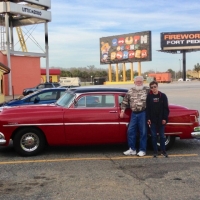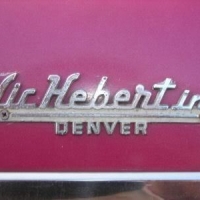Importance of turbulent flow in combustion chamber
In looking at the various combustion chamber designs out there for a Hudson engine I was surprised when I got them all together. Below you will find closeups of the 1) stock design, 2) Clifford Al head design, and 3) the Twin Vortex design. It is interesting that the Hudson engineers gave quite a bit of thought to providing some swirl or turbulence to the flow in their combustion chamber design. The rounded area opposite the valves will provide definite flow as the gas fuel mixture enters one valve fires swirls back to the exhaust. What is even more surprising however is the very poor design of the supposed "High Performance" Clifford head. Basically, the air-fuel mixture is hitting a brick wall and there is no effort to make a swirl or any mixing in the chamber. All I can say here is wow! The Twin Vortex head as shown definitely ups the process with two areas to create swirl and turbulence in the combustion chamber, a definite improvement over stock and way better than the Clifford head.

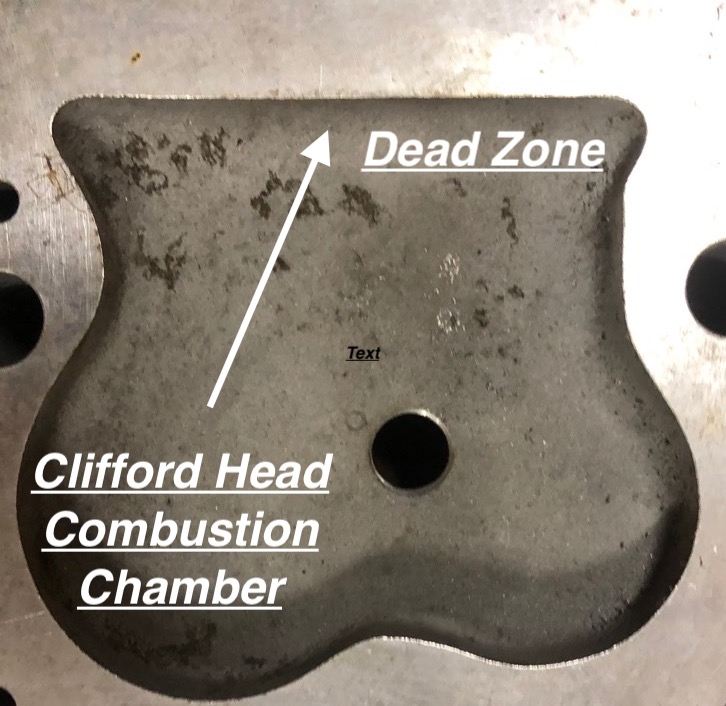
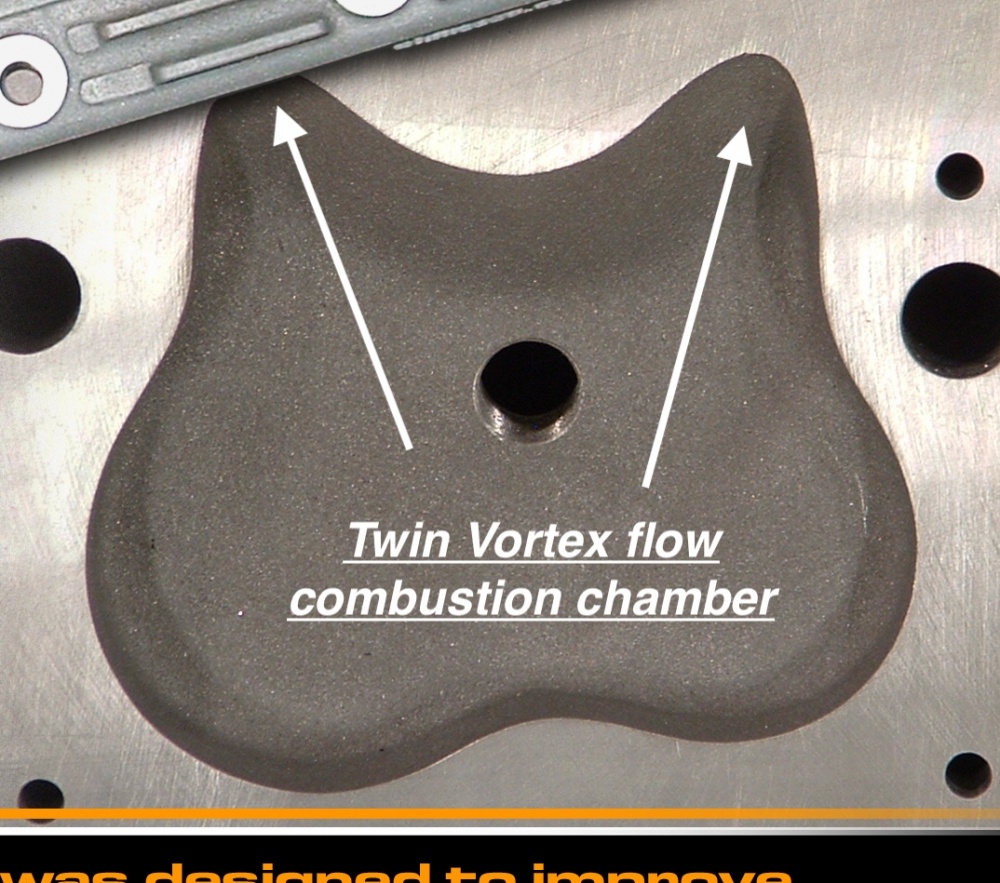



0
Comments
-
Very interesting. So, the Clifford head is basically a paper weight? 😆0
-
Well here is even more interesting info. It would appear that the Clifford Head is an exact copy of the 1950s Edmunds head. Edmunds for all the great looks their products had did exactly ZERO actual development work for flow, etc. Also, the Clifford Head weighs 31 lbs so it is also a boat anchor. I bought a Clifford head back in the day and now I think I got ripped and did not know it.
Here is an image of a Hudson Edmunds head.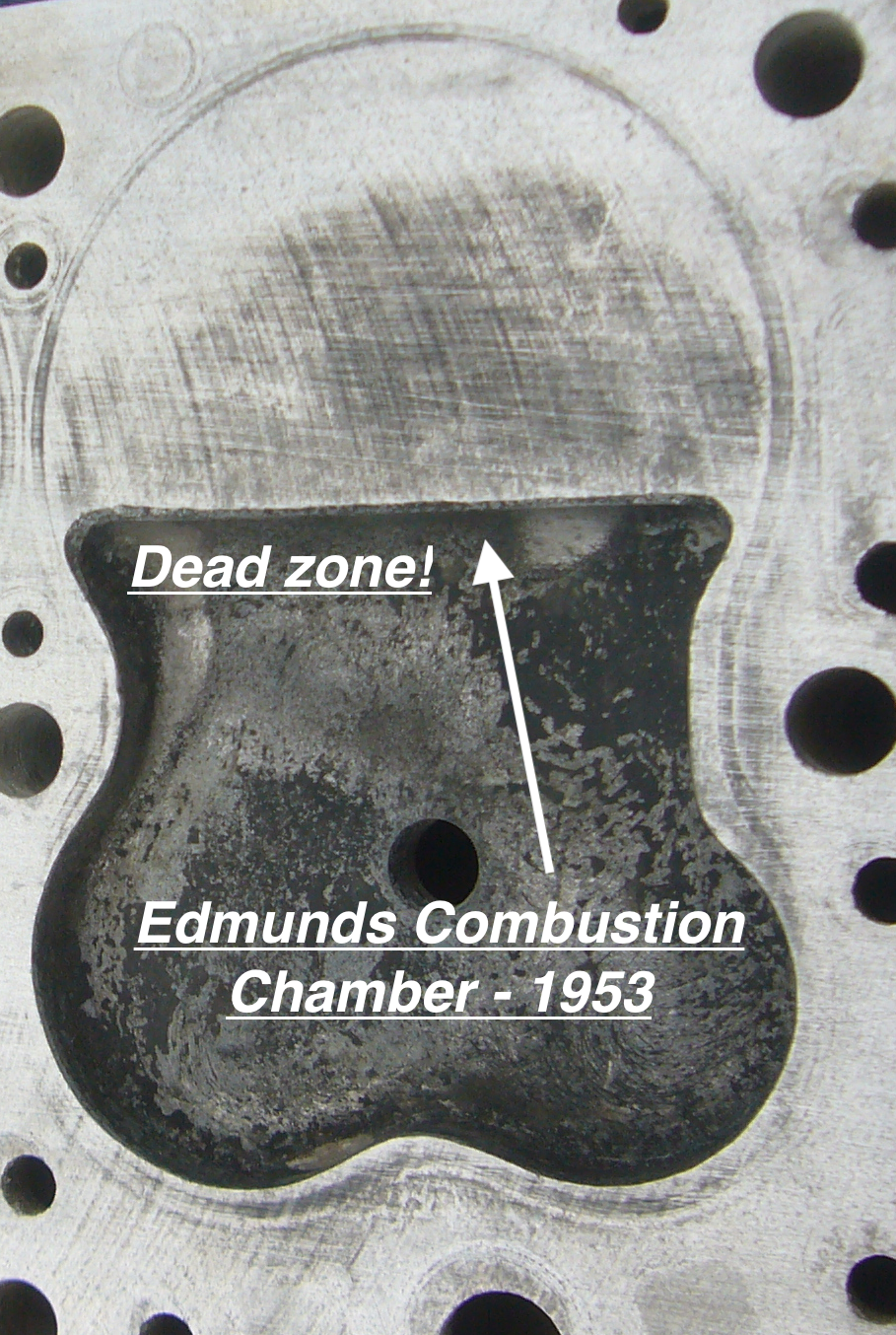
0 -
Just for another comparison - Some have speculated that Clifford copied the Australian Gibson Binks head. From the outside that may be true but the combustion chamber - NOT!

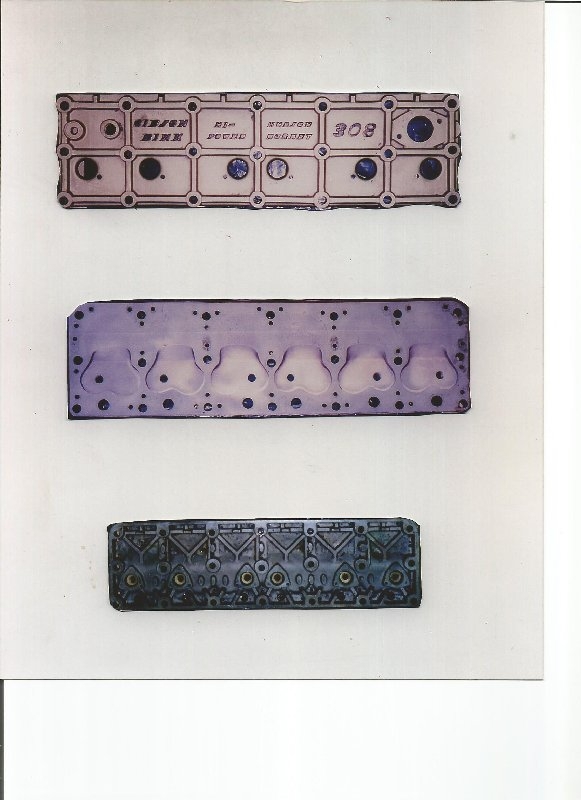
0 -
I do understand a bit about head design. Back when flat head engines were everywhere, everyone had tricks to get more performance from the engines.
Fast forward 70 years now everyone has the ability to use air flow to get true performance from any engine today0 -
Remember seeing hot rodder writeups where they would dimple the interior of the head between the intake valve and spark plug and all around with a punch and hammer. This was thought to change the mixture flow from laminar to tuburlent. And then they would cc the chambers. Certainly seems logical.0
-
There will be some dimpling in the new 2x2 intake manifold!0
-
Very interesting. I hope we see some high quality dyno testing, making sure that comparisons are made like-for-like, eg using the same compression ratio between heads so that true improvements are accurate and not due to other factors. The depth of the squish area across the top of the piston is also very important, is this being looked at as well?
0 -
How did Smokey Yunick modify the heads on the 308's he built for Marshall Teague in the early 50's?0
-
Dyno testing would be nice and actually, one of the original twin vortex heads was given free of charge to a HET member that sometimes appears on this forum! Unfortunately, the head was never tested and was put on a car that the member sold! Dyno testing takes money as you pay for time on the machine, and we would need a setup with a 308 such that we could swap out heads in real time. Maybe the guys on Hot Rod TV would do that? Remember this project is being done for no-profit, all at cost and we are probably looking at no more than 30 heads cast. However, if someone wants to take that on I would be willing to LOAN them a head.
One of the benefits of the Twin Vortex head BTW is that you can run it at 8.5 or even higher compression ratio and not get pre-ignition like the stock heads, that max out at about 7.5.0 -
So what compression ratio will the new head be assuming standard head gasket, bore and pistons?
0 -
On a stock 308 - 8.4:10
-
I seem to recall one of Bernie’s letters mentioned that Hudson said they could modify their engines to run on better fuels by increasing the compression to between 9 and 10 to 1. They must have done some work on high compression head design to say this.0
-
I'm running 11.25:1 on my 5" stroke Hornet engine, with a Clifford head and 91 octane pump gas. No pinging, and no overheating issues driving it on the street.terraplane8 said:I seem to recall one of Bernie’s letters mentioned that Hudson said they could modify their engines to run on better fuels by increasing the compression to between 9 and 10 to 1. They must have done some work on high compression head design to say this.0 -
0
-
Is it possible to find a good cast iron welder to add the vortex design on a stock Hudson head. I know that the plug holes can't moved. In the past. I have had cast iron work done on a few other engines.0
-
I doubt you could duplicate this in a cast iron head, 1) cast iron heads run hotter due to poor thermal properties. This will result in overheating and pre-ignition, ie. knock 2) you would need to revise the entire chamber not just a small portion. 3) even if you could pull it off - hello premium fuel.0
-
I have a high performance Chevy engine that I run premium fuel in. I'd do the same with my Hudson0
Categories
- 36.9K All Categories
- 113 Hudson 1916 - 1929
- 20 Upcoming Events
- 92 Essex Super 6
- 28.6K HUDSON
- 573 "How To" - Skills, mechanical and other wise
- 995 Street Rods
- 151 American Motors
- 178 The Flathead Forum
- 49 Manuals, etc,.
- 78 Hudson 8
- 44 FORUM - Instructions and Tips on using the forum
- 2.8K CLASSIFIEDS
- 608 Vehicles
- 2.2K Parts & Pieces
- 77 Literature & Memorabilia
- Hudson 1916 - 1929 Yahoo Groups Archived Photos
